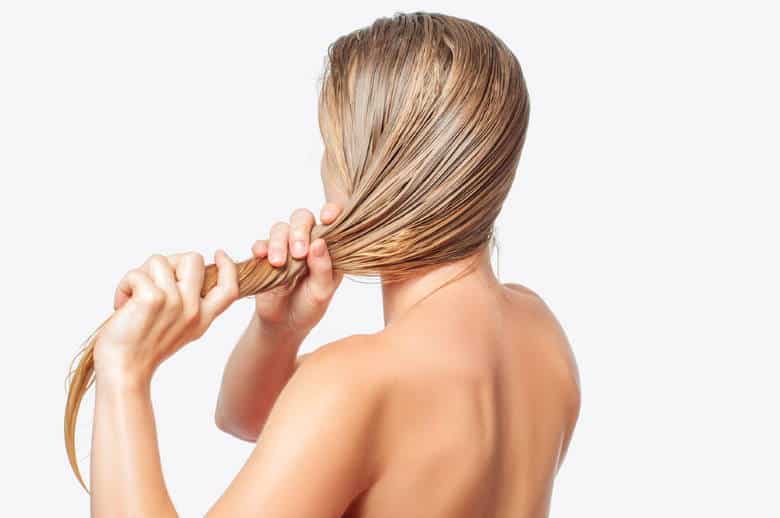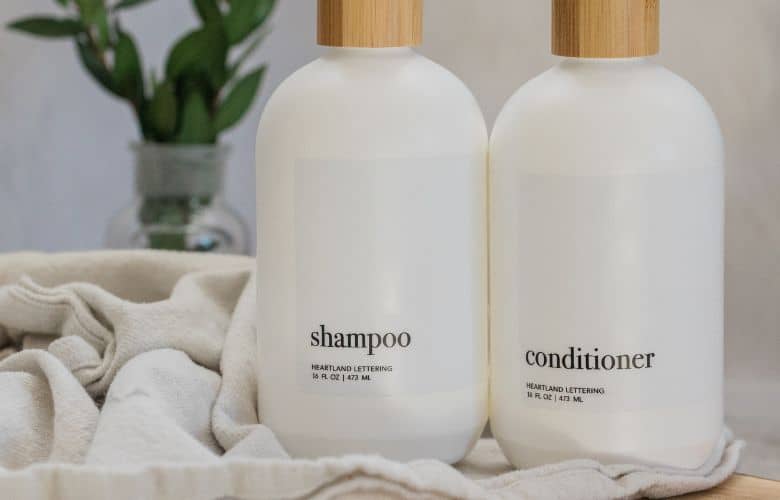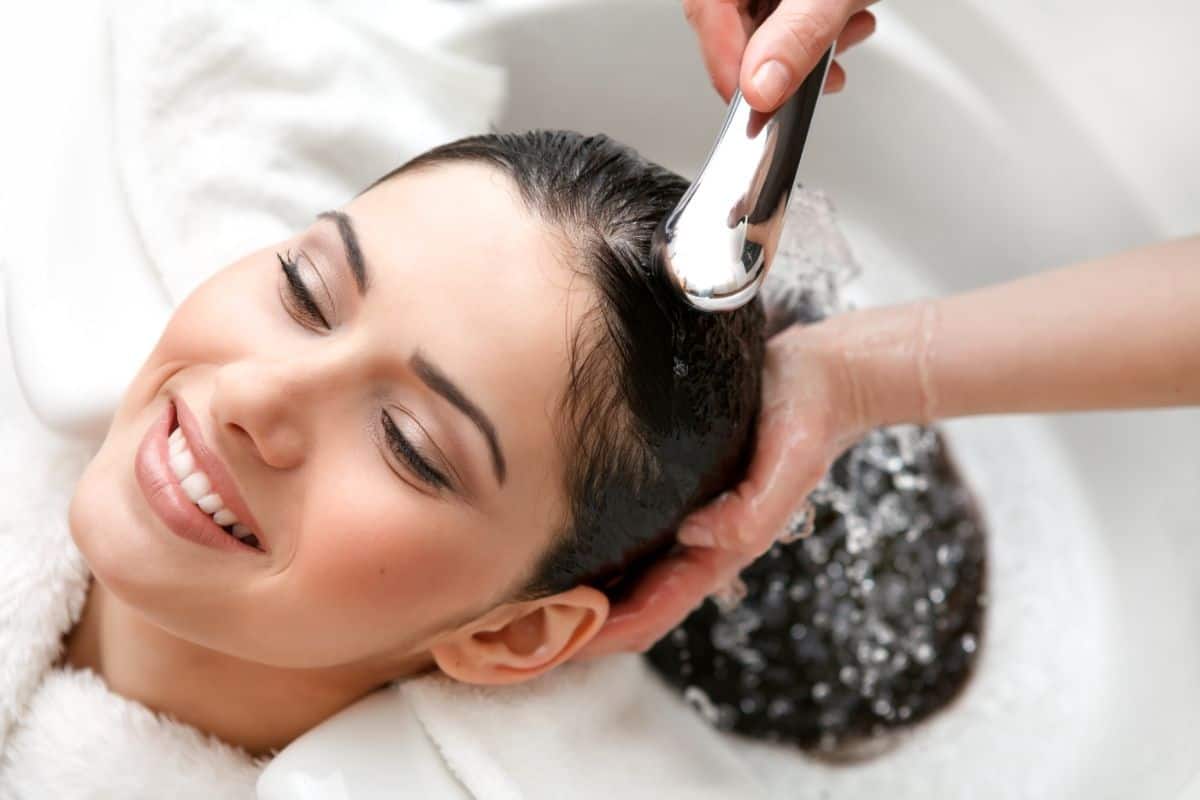If you’re reading this, you likely take good care of your hair and possibly spend a small fortune each year doing so.
Most of us know it’s important to shampoo and condition regularly, but how often? And what kind of conditioning do you actually need?
Let’s take a look, shall we?
How Often Should I Condition My Hair?

The short answer: you should use a rinse-out conditioner after every shampoo, particularly with long hair.
However, how often you shampoo your hair will very much depend on the type of hair you have.
The general advice from experts is that you should not be washing your hair every day.
Most people cannot produce enough natural oils in one day to counteract washing our hair that frequently. If we shampoo our hair too often, our hair cannot nourish and repair itself naturally.
Over time, this leads to brittle hair and split ends.
If you color your hair, you’ll want to only condition your hair 1 to 2 times a week.
That’s because the moisturizing agents in conditioners will decrease the longevity of the color in your hair.
If you have soft and oily hair, you might want to limit conditioning your hair to 2-3 times a week, and not use any leave-in conditioner treatments.
Too much moisture can weigh down your hair and make it feel less clean or even greasy.
On the other hand, if you have very dry, brittle locks, then you should apply rinse-out conditioner after every shampoo in addition to leave-in treatments to help hydrate your strands. You are also a good candidate for using hair masks more frequently.
How To Wash Your Hair Less Frequently And Still Feel Clean
If you are currently washing your hair every day and want to cut down, but are worried your hair will feel too oily – try the following hair washing routine.
A Few Times A Week: Shampoo & Condition

Shampooing your hair helps remove dirt and oil from your scalp in addition to your strands.
It also removes excess product build-up that can cause tangles and frizz.
Wet your hair with warm (not hot) water, and use an appropriate shampoo for your hair type/condition. Avoid using shampoos containing sulfates and silicones.
These chemicals strip away the natural oils in your hair, causing them to feel tight and lifeless.
Instead, opt for a mild shampoo that won’t irritate your scalp. Try one that contains no more than 3% sodium lauryl sulfate (SLS).
After rinsing the shampoo out, use about a quarter size dollop of conditioner for medium lengths (adjust as necessary for shorter or longer lengths) and work through your ends and midway up first.
If you have an oily scalp, avoid applying conditioner all the way up to your head so you don’t end up with a greasy scalp.
Leave the conditioner on for at least 3 minutes before rinsing out thoroughly. Again, try not to use super hot water as that will open the cuticle or outer layer and make your hair lose moisture.
Lastly, gently pat dry with a towel. Don’t rub your hair too hard as this may rough up and damage the cuticle.
Apply a Leave-In Conditioner
For those with dry, frizzy hair, applying a leave-in conditioner is a great way to help keep your hair healthy and manageable. It’s also more lightweight than standard rinse-out conditioner since it’s meant to be left in your hair.
Leave-in conditioners come in two forms. They either contain silicone or protein.
Silicone-based conditioners tend to give your hair softness and shine. Protein-based conditioners add body and volume.
Apply a small amount of leave-in conditioner to damp hair. Gently work through your entire head. Be careful not to overdo it. Too much conditioner can make your hair look greasy.
If you’re going to wear your hair down, don’t forget about styling tools. A wide-tooth comb, brush, or paddle brush can help tame unruly curls.
As Needed: Deep Condition your Hair
If the above steps still aren’t doing enough for your hair health, consider doing a deep condition.
A deep conditioner contains higher concentrations of humectants and emollients found in regular conditioners to help super charge the hydration of very dry hair.
Deep conditioning makes your hair stronger and healthier. It adds moisture and elasticity to your strands. Plus, it reduces static electricity, making your hair easier to style.
Deep conditioning also helps reduce frizzy hair caused by heat styling. To do so, apply a generous amount of conditioner to your hair. Work through your entire head, focusing on the midsection.
Once you’ve applied the conditioner, wait 20-30 minutes before rinsing it out with cool water. Doing so allows the conditioner to penetrate the hair shaft and seal in the moisture.
Apply a Weekly Mask
Finally, another routine to consider adding to your hair care regimen: a weekly hair mask. Masks are great for strengthening damaged hair. Plus, they protect your hair against UV rays and pollution.
Masks should be applied after you shampoo your hair.
Masks usually come in two forms. Some masks contain proteins and other ingredients designed to strengthen your hair. Others contain moisturizers and antioxidants.
There are many pre-formulated hair masks on the market, but you can just as easily make one at home with natural ingredients found in your kitchen.
Here are some great recipes for various hair types and issues to make and use.

Remember To Use Quality Products
Now that you know how to care for your hair, it’s time to shop.
You need products that are good for your hair. Look for products that contain natural ingredients since non-chemical ingredients are safer for your hair.
Look for shampoos that don’t contain sulfates. Sulfates strip away the oils from your hair, which can lead to dull, lifeless hair.
Avoid products that contain alcohol, as they dry your strands out.
Also, if you color your hair, make sure to use color-safe shampoo and conditioners to preserve your color.
Avoid using too many products at once. Mixing different kinds of products together can lead to clogged pores.
Don’t use more than one type of product on your hair. For example, don’t mix leave-in conditioners with a regular conditioner.
Remember to always read labels and that any products contain harsh chemicals that will make your hair feel good at first, but can actually be more harmful than helpful in the longterm.
Summary
If you want healthy, shiny, manageable hair, conditioning should be a regular part of your hair care routine.
Using a regular conditioner after each shampoo is a basic foundation – but you may need to take it one or two steps further if you’ve got extra dry, frizzy or unmanageable locks.
Keeping your hair well-conditioned and hydrated will go a long way towards giving you healthy strands that look beautiful but also hold up against the elements and any styling you do.